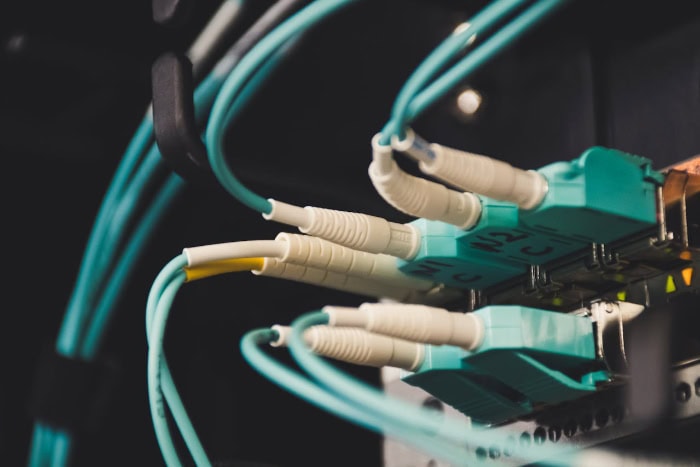What Is a Proxy Server? How It Shields You Online

Your online activity is rarely private. Every click sends data directly from your device to a website, often exposing your location and identity along the way.
A proxy server acts as a necessary buffer to interrupt this direct line. It functions as an intermediary gateway sitting between you and the rest of the internet to separate your local network from outside traffic.
Consider a real-world comparison. If you hired a personal assistant to deliver a message, the recipient would only see the assistant, not you.
The assistant handles the interaction while you remain safe behind the scenes. A proxy does exactly this for your web requests.
How a Proxy Server Works
The mechanics of a proxy server rely on a fundamental redirection principle. Instead of your computer communicating directly with a website, it delegates that task to an external server.
This separation creates a distinct pathway for your data. The process ensures that your device never touches the destination server directly and provides a layer of separation that effectively alters how information travels across the network. It functions as a digital relay point that intercepts and manages requests before they reach their final destination.
The Flow of Internet Traffic
When you type a web address into your browser without a proxy, your computer sends a request straight to the web server hosting that site. The server identifies your request and sends the webpage data back to your device.
A proxy server interrupts this direct line of communication. The moment you initiate a request, it travels to the proxy server first. The proxy accepts this request and forwards it to the destination website.
The website receives the inquiry but sees it coming from the proxy rather than your personal device. Once the website processes the request, it sends the data back to the proxy.
Finally, the proxy forwards that data back to you. The user receives the content they asked for without ever establishing a direct connection with the source.
It operates like a sophisticated relay race where the first runner never has to cross the finish line or meet the officials at the end.
Masking Your IP Address
Every device connected to the internet possesses a unique identifier known as an IP address. This string of numbers functions like a home address for digital mail.
It tells web servers exactly where you are located and who is asking for information. When you connect directly to a site, that address is fully visible to the destination server.
A proxy server protects your identity by substituting your IP address with its own. Since the proxy is the entity making the final request to the website, the website only sees the proxy's IP address and location.
If you are physically located in New York but route your traffic through a proxy server in London, the website assumes the visitor is in the United Kingdom. This substitution strips your personal digital footprint from the transaction.
Your original IP remains hidden behind the proxy's shield preventing the destination server from logging your actual location or identity.
Forward Versus Reverse Proxies
Proxies generally fall into two specific categories based on which side of the conversation they represent. The distinction lies in whether the proxy acts on behalf of the user or on behalf of the server.
Forward Proxy
A forward proxy sits in front of the client or user. It acts on the sender's behalf.
This is the type most individuals use for personal privacy. When you configure your browser to route traffic through a specific server to hide your location, you are using a forward proxy.
Its primary function is to protect the user or regulate the user's traffic. It ensures that the client remains anonymous to the internet at large.
Reverse Proxy
A reverse proxy sits in front of web servers. It acts on behalf of the website rather than the user.
Large organizations utilize these to manage incoming traffic and protect their infrastructure. When thousands of people try to visit a popular site simultaneously, a reverse proxy distributes those requests to prevent the main server from crashing.
It also acts as a security barrier. Hackers hitting the website are actually hitting the reverse proxy, leaving the core database and internal servers untouched and secure.
Why Use a Proxy

Individuals and organizations implement proxy servers for reasons that extend far beyond simple curiosity. While the underlying technology involves rerouting data, the practical applications vary significantly depending on who controls the server.
Network administrators rely on them to manage corporate resources, while everyday internet users often turn to them for personal protection.
Privacy and Anonymity
The most common reason individuals seek out proxies is to reclaim a measure of digital privacy. When you browse the web normally, your IP address acts as a beacon that broadcasts your general location and device identity to every site you visit.
Advertisers and data brokers harvest this information to build detailed profiles of your habits, interests, and movements. They use these profiles to target you with specific ads or sell your data to third parties.
A proxy server effectively severs the link between your browsing habits and your identity. Because the proxy makes the request on your behalf, the destination server only records the proxy's details.
This makes it significantly harder for third-party trackers to compile an accurate history of your online activity. The websites you visit see the traffic, but they cannot easily attribute it back to your specific device or home network.
Access Control and Content Filtering
Proxies function as powerful gatekeepers for institutions that need to regulate internet usage. Schools, government offices, and corporations frequently configure their networks to route all traffic through a central proxy.
This setup gives administrators the authority to approve or deny requests based on specific criteria.
If a company wants to ensure employees remain focused during work hours, the network administrator can configure the proxy to block requests to social media platforms or streaming sites. When a user attempts to access a restricted URL, the proxy intercepts the request and returns an error message or a redirect page instead of the content.
This filtering capability also helps maintain network security by blocking access to known malicious websites or phishing domains before they can load on a user's screen.
Performance and Caching
Large organizations often deploy proxies to improve network speed and reduce bandwidth consumption. This is achieved through a process called caching.
When a user requests a popular webpage, the proxy server saves a local copy of that page's data, including images and scripts.
If a second user on the same network requests that same page shortly after, the proxy does not need to download the data from the internet again. Instead, it serves the saved copy directly from its internal storage.
This process is much faster than retrieving data from a remote server and significantly reduces the amount of data flowing through the organization's internet connection. For companies with thousands of employees accessing the same internal portals or news sites, caching can save substantial bandwidth costs and eliminate lag.
Bypassing Geo-Restrictions
Content availability on the internet is frequently limited by geographical borders due to copyright agreements and licensing deals. Streaming services and news outlets often restrict access to their libraries based on the user's IP address.
If a user attempts to view a video licensed only for the United States while traveling in Europe, the service will deny the connection.
Proxies provide a workaround for these digital borders. By connecting to a proxy server located in the target country, a user can trick the destination website into believing they are physically present in that region.
The streaming service sees a request coming from a local IP address and grants access to the content. This capability allows users to access region-locked media, games, and information that would otherwise be unavailable in their actual location.
Proxy Server Versus VPN
Many internet users conflate proxy servers and Virtual Private Networks (VPNs) because they appear to perform the same function. Both tools allow you to route your traffic through a remote server and mask your physical location.
The similarity effectively ends there. The technology driving them operates at different depths of your system, and the level of security they provide varies drastically.
Scope of Protection
Proxies generally operate at the application level. This means they only reroute traffic for the specific program where the proxy is configured.
If you set up a proxy within your web browser to access a specific site, only your web browsing data flows through that server. Background applications, music streaming services, email clients, and operating system updates continue to use your standard, direct connection.
The protection is granular and limited to the specific task you are performing.
A VPN operates at the operating system level. Once you activate a VPN client, it captures every single byte of data leaving your device.
It secures the browser, the gaming applications, and any background processes simultaneously. The VPN creates a blanket layer of security that covers the entire machine, ensuring that no application accidentally leaks your real location or data outside the protected connection.
Encryption Standards
A critical distinction lies in how these tools handle the content of your data. A standard proxy server functions primarily as a relay.
It hides your IP address from the destination website, but it rarely encrypts the data passing through the connection. Your internet service provider, government monitors, or a hacker on a public Wi-Fi network can still intercept and read the information you are sending.
The envelope has a fake return address, but the letter inside remains readable.
VPNs establish an encrypted tunnel between your device and the internet. The software scrambles your data using complex cryptographic protocols before it even leaves your computer.
Even if a malicious actor intercepts the traffic, they will only see indecipherable code rather than your passwords, emails, or browsing history. This encryption is what makes VPNs the standard for protecting sensitive data like banking information.
Cost and Reliability
Free proxy servers are widely available, but they come with significant performance trade-offs. Because they are open to the public, they often suffer from overcrowding, leading to sluggish speeds and frequent connection drops.
Maintaining a server costs money, so providers of “free” proxies often monetize their service by injecting advertisements into your browser or selling your browsing logs to third parties.
Paid VPN services operate on a subscription model that funds robust infrastructure. Reputable providers invest in high-speed servers and software maintenance to ensure stable uptime.
They typically offer faster connection speeds and strict no-logging policies that legally bind them to protect user privacy. While a free proxy might suffice for a quick, low-stakes task, a paid VPN offers the reliability necessary for daily security.
Common Types of Proxy Servers

Not all proxies serve the same purpose or offer the same level of secrecy. Some are designed to be invisible administrators that manage network traffic without the user knowing, while others are built specifically to cloak identity.
The configuration of a specific server determines how much information it shares with the outside world and how effectively it can bypass strict firewalls.
Transparent Proxies
A transparent proxy makes no attempt to mask your identity. When you connect through one, it forwards your request along with your original IP address to the destination server.
You might wonder why anyone would use a tool that offers no anonymity. These servers are typically deployed by network administrators in schools, libraries, and corporate offices for content filtering and caching.
Their primary job is to monitor activity and speed up loading times by saving copies of popular websites rather than protecting user privacy. The user is often completely unaware that their traffic is being intercepted and routed through an intermediary.
Anonymous Proxies
An anonymous proxy provides a middle ground for privacy seekers. It successfully hides your personal IP address from the website you are visiting which prevents them from tracking your exact location.
The server does not hide its own nature, however. It identifies itself to the destination website as a proxy server. While this keeps your identity private, some websites may restrict access simply because they detect the use of a proxy tool.
It works well for general browsing where strict secrecy is not required but basic privacy is desired.
High Anonymity Proxies
Elite proxies, often called high anonymity proxies, offer the highest level of stealth available in this technology. These servers not only scrub your personal IP address from the request but also strip away any data that would identify the server itself as a proxy.
To the destination website, the connection looks exactly like a standard user browsing from a residential device. Many elite proxies also periodically rotate IP addresses to further obscure the user's digital footprint.
Such features make them extremely difficult to detect or block, making them the preferred choice for accessing strictly geoblocked content or maintaining total anonymity.
Data Center Versus Residential Proxies
The source of the IP address is just as important as the server's configuration. Data center proxies use IP addresses created in bulk by cloud hosting services.
They are fast and cost-effective, but because they often share similar subnets, websites can easily identify and blacklist them. Residential proxies utilize genuine IP addresses assigned by Internet Service Providers to real homeowners.
Traffic routed through a residential proxy appears indistinguishable from a regular person browsing the web at home. The legitimacy of these addresses makes residential IPs much harder to detect and block, though they are typically more expensive to acquire than their data center counterparts.
Risks and Limitations
While proxy servers offer valuable tools for managing traffic and masking identity, they introduce specific hazards that can compromise the very security users seek to establish. Relying on an intermediary means entrusting a third party with your data.
If that third party is malicious or negligent, the proxy becomes a vulnerability rather than a shield. Users must weigh the benefits of anonymity against the potential for data exposure and performance degradation before routing their connection through an unknown server.
Security Vulnerabilities
The most significant danger lies in the use of public or “free” proxy services found through quick internet searches. Maintaining a server requires electricity, hardware, and maintenance, meaning no service is truly free.
Providers of these open proxies often monetize their operation by harvesting user data. They may log your browsing history to sell to advertisers or, in worse scenarios, inject malicious advertisements into the websites you visit.
Some unsecured proxies are even traps set by cybercriminals to distribute malware directly to connected devices. Using a random free proxy effectively hands your data over to a stranger with no accountability.
Lack of Encryption
A fundamental weakness of many standard HTTP proxies is the absence of encryption. Although the proxy hides your IP address from the destination site, the data itself often travels in plain text between your device and the proxy server.
If you enter passwords, credit card numbers, or personal emails while connected, the owner of the proxy server can theoretically see and record that information. Furthermore, any hacker capable of intercepting the traffic on the network can read the data just as easily.
Unlike a VPN, which wraps all traffic in a secure tunnel, a standard proxy leaves the content of your communication exposed to anyone watching the line.
Performance Issues
Routing traffic through an additional stop inevitably impacts internet speed. Every piece of data must travel from your device to the proxy, be processed, sent to the website, and then return through the same path.
This extra “hop” introduces latency, which can result in noticeable lag during browsing or streaming. Public proxies are particularly prone to severe slowdowns because they are often overcrowded with thousands of simultaneous users.
The limited bandwidth of the server gets split among too many connections, causing pages to time out or load at a fraction of your normal internet speed.
Conclusion
A proxy server functions as a versatile intermediary that changes how devices communicate with the wider web. It provides a necessary layer of separation to mask user identity, bypass geographic restrictions, and filter unwanted content.
Organizations rely on these gateways to maintain network order and efficiency, while individuals often employ them to browse without leaving a clearly traceable footprint. The technology offers a practical method for managing digital traffic that balances control with anonymity.
Selecting the right tool depends entirely on the sensitivity of the task at hand. A proxy is sufficient for casual activities like accessing region-locked streaming libraries or circumventing basic content blocks.
It handles the location change effectively without heavy overhead. However, it cannot provide the deep security required for handling private financial data or confidential communications.
For any activity where data theft is a concern, a reputable VPN with full encryption remains the only safe option. Users should treat proxies as tools for access rather than total security solutions.


